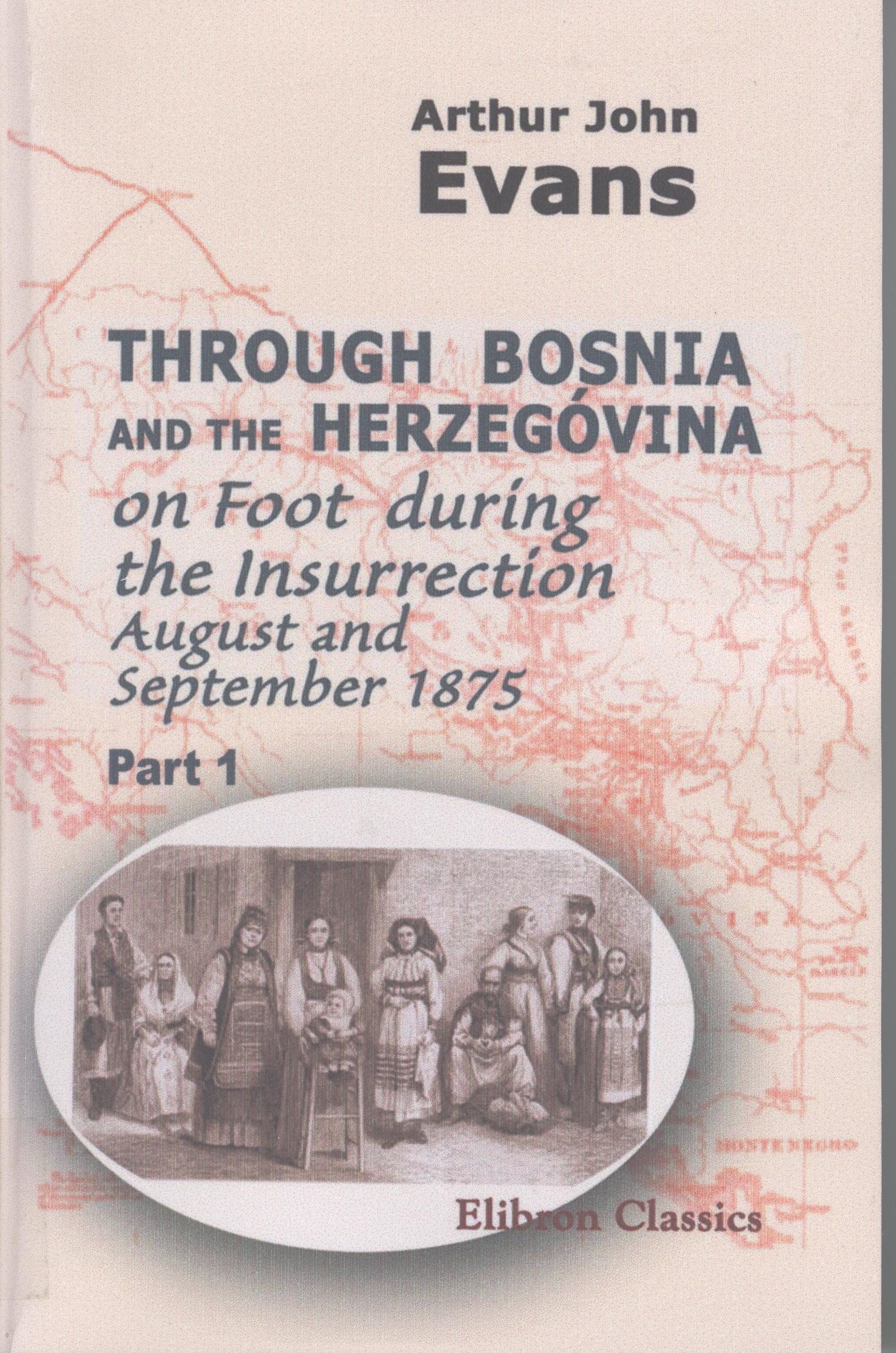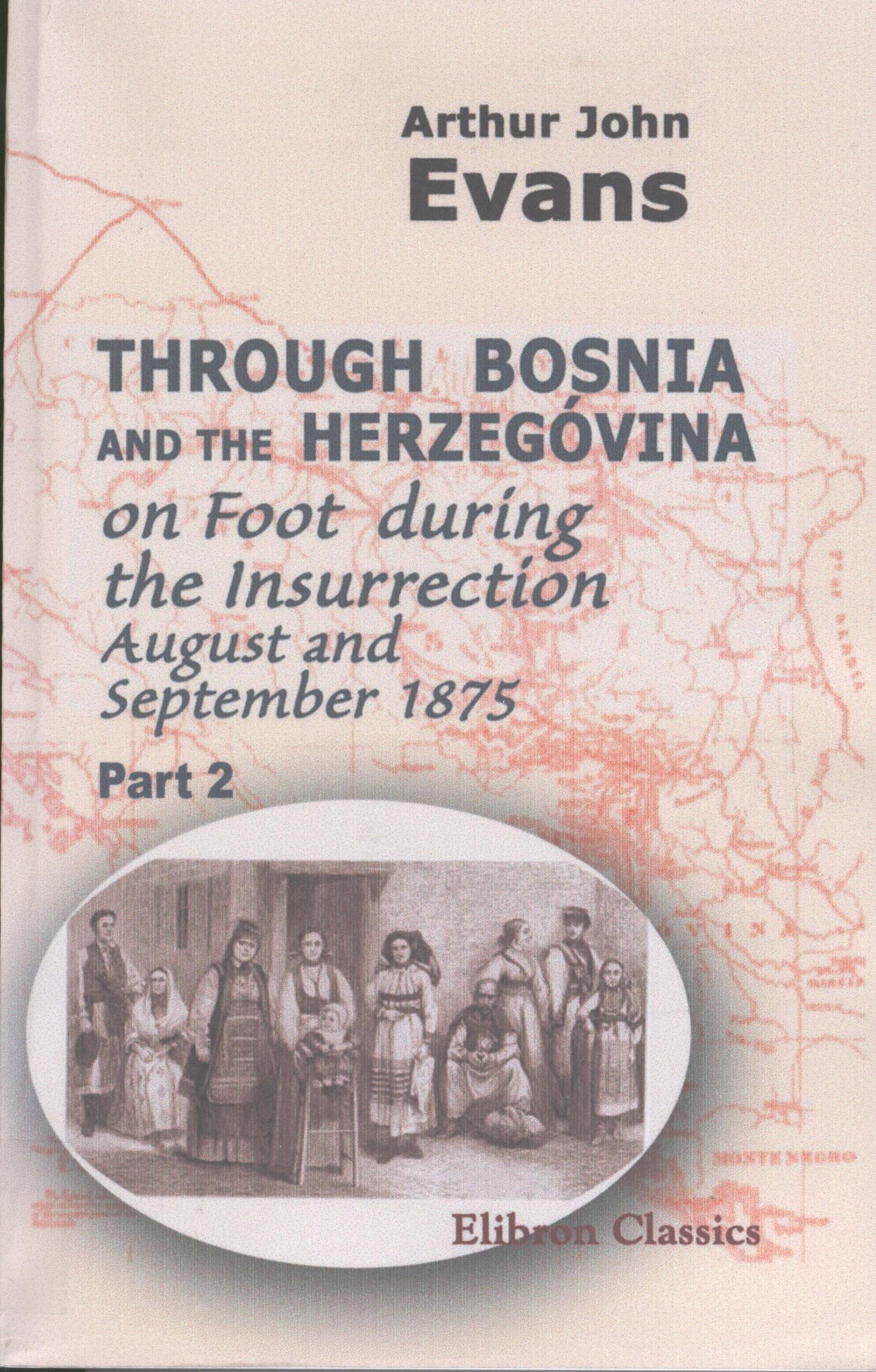 |
Through Bosnia and Herzegovina on Foot during the Insurrection- Arthur Evans’s nineteenth-century classic reconsidered
by Neval Berber
 
When in August 1875 Arthur J. Evans crossed Bosnia-Herzegovina on foot, he was twenty-four years old, had already travelled twice to the Balkans, and had a boundless passion for archaeology. What was to make Evans a famous archaeologist was not just this passion - which at the time, thanks to the discoveries by Heinrich Schliemann at ancient Troy (1871), was exciting many other young scholars - but also his adventurous spirit. That spirit would in 1894 take Evans to undertake another dangerous expedition, to Crete, where he would discover the ancient Minoan civilization at Knossos.
At all events, in 1875 his passion for adventure took Arthur Evans, together with his brother Lewis, to Bosnia-Herzegovina, at that time still an unknown land off the stage of important international events, ignored by the English public thanks to its geographical position and a seeming general disinterest in the Balkans on the part of British diplomacy.
Today it is unclear whether this trip undertaken by the Evans brothers was prompted by some archaeological insight, or if it was inspired rather by youthful curiosity. But we can be certain that what the two brothers found in this Balkan region was not what they expected or sought. For that very July of 1875 was to see in Bosnia the start of what is now considered one of the most important social upheavals in the country's modern history, following which three years later Bosnia-Herzegovina was transferred from the control of the Ottoman empire to that of the Austro-Hungarian. Arthur and Lewis were witnesses to the outbreak of this revolt.
Accidental witness
Not a single sentence of the resulting account by Evans suggests that he himself propounded revolution, or hints at any desire on his part for that kind of adventure. Unlike the Russian, Dutch and Italian volunteers who travelled to Bosnia to fight on the side of the insurgents, Arthur J. Evans was a comfortable Victorian, an alumnus of the University of Oxford who, most likely in search of sites of archaeological interest, ended up witnessing the explosive start of far-reaching events.
It is this very distance from the actuality of political and social unrest in Bosnia that renders Evans’s travel account all the more interesting, especially when we take note of the political and historiographical modifications that the revolt and its interpretation underwent in succeeding years, with Evans’s book being variously defined as either 'Slavophile' or 'anti-Croat'. In reality, at the time when he made his trip to Bosnia in 1875 and drafted his account of it in 1876, Evans did not have a set political preference regarding the national projects of the South Slavs. Only later would he formulate his political biases, which would also take different shapes in the course of time. Indeed Evans’s entire historical and literary oeuvre related to the territories of the former Yugoslavia needs to be scrutinized bearing on mind that it evolved in time, passing through very different phases. The drafting of this early travel account marked the beginning of an interest in the former Yugoslav lands on the part of Evans that would continue until his death in 1941. His trip in 1875 was an 'educational' excursion, and doubly so since it was also an expedition into the alien national ideologies of the Balkan Slav populations.
Evans's account, rich in interesting anthropological and ethnographical observations and in minuted notes on the natural beauties of these lands, as well as in lofty reflections on Bosnia's ancient, mediaeval and modern history, is at the same time an inquiry into the origins of the contemporary revolt. Moreover, his conclusions concur with those of historians today. Evans and today's received historiography agree, in fact, on the main reasons for the Bosnian revolt. Those who sought power through it were members of the rayah - non-Muslim Ottoman subjects, mostly Orthodox but also frequently Roman Catholic - although occasionally the non-land-owning Muslim population too played an active role. For people of all ranks were victims of a corrupt feudal system, and they revolted in order to improve their conditions of work and life, which had worsened thanks to a vast and continuous increase in taxation. Only subsequently, when Evans was no longer in the country, did the revolt assume the features of a national revolt, after the Serb notables of Bosnia turned in favour of unification of the region with the adjoining Principality of Serbia.
Support for the oppressed
In this regard, the account does contain certain statements that could be interpreted, as they occasionally were, as anti-Turk and philo-Slav, or even as philo-Serb. Such interpretations are groundless, however, especially when one bears in mind that the author was not just sympathetic to the social context of the Bosnian events of 1875, he openly exhibited his political and personal support for the cause of the oppressed rayah. Those sympathies can be traced to Evans’s harsh critique of the feudal system then in operation in Bosnia, and which had regulated Bosnian society for centuries. These aspects of feudal government had been further strengthened in the 1850s, in spite of reform attempts undertaken in the first half of the century. Evans’s harsh criticism of this social system can be further traced to his own liberal ideas, which led him to hope for the peasants’ liberation from the savage system of subjection in which they lived. This stance, evidently of a socio-political rather than a national or anti-Turkish character, is evident in Evans's view of not just the Ottoman governors in Bosnia, but of all representatives of the Ottoman state - from janissaries to Greek fanariots and public officials (zaptieh) - in short, all representatives of that power system.
The various images of Bosnia that emerge from the text can all be seen as contributions to Evans’s inquiry into the revolt. The work is a subtle investigation into the ethnic, religious and cultural relations of the region, in which the author explores the innermost reasons that lay behind the events of that summer. From this study, in which Evans used his archaelogical as well as his anthropological and ethnographical knowledge, a very complex society emerges, an authentic melting-pot of articulated social and cultural relations. For all its richness of detail and often polished literary language, the account thus provides a very enjoyable and interesting read, even if we leave aside the context of the revolt.
Seen through the eyes of a foreigner, nineteenth-century Bosnia-Herzegovina inevitably assumed the features of a land pervaded by ethnic hatred, social injustice and religious intolerance. Yet these are not the only features that characterize Evans's image of Bosnia. He distinguished himself from all other travellers of his age by managing to seize upon certain forms of cultural syncretism characterizing the region. In fact, whereas other authors placed great weight on what separated different ethnic groups in Bosnia, Evans tended to underline what united them, making references either to local examples or to more regional aspects. His detailed remarks regarding the custom of Croat women from the northern region of Bosnia of plaiting their hair round a fez ‘à la belle Serbe’ are striking, as are his remarks on the rite of some Christian pilgrims who would grovel on the ground and kiss the earth ‘as in a mosque’. It may be suspected that Evans was in search of certain ‘characteristically Bosnian’ syncretisms in order to find if not a solution, then at least a counterweight, to the religious, ethnic and social conflicts to which he was a passive witness. Evans’s account is more than an investigation of - and in - the revolt. He often describes in detail the human figures and the landscapes that he encountered. The characters become the actors in this fascinating story, the places their background, and both are located in their respective important historical roles in 1875. In this way, the entire exposition, and particularly that of the revolt, is rendered more plastic and closer to the reader.
To a present-day observer of Bosnia trying to evaluate the cohabitation of the three major ethnic groups in the country, Evans’s account may appear very appealing. The existence of a common cultural background shared by the different ethnic groups does emerge from the account, and can be taken as a valid reference even today, as well as providing a starting-point for alternative solutions to shared problems - for example, in the cultural sphere - after the wars of 1990s and during the years of post-war cohabitation. From Evans’s perspective, Bosnia's common culture might today play a central role in the construction of an alternative mode of ethnic and religious cohabitation. This certainly remains a necessity if only for geographic reasons, with three populations sharing the same territory. Thus reading Evans may help us to look beyond the nationalistically skewed rhetoric that continues to pervade not just the Balkans.
This text is a revised version of the introduction to an Italian translation of Arthur J. Evans’s book, A piedi per la Bosnia durante la rivolta, Edizioni Spartaco 2005, edited by Neval Berber. The author graduated in English language and literature at the University of Verona, and is currently concluding her Ph.D at the National University of Ireland, Galway.
|